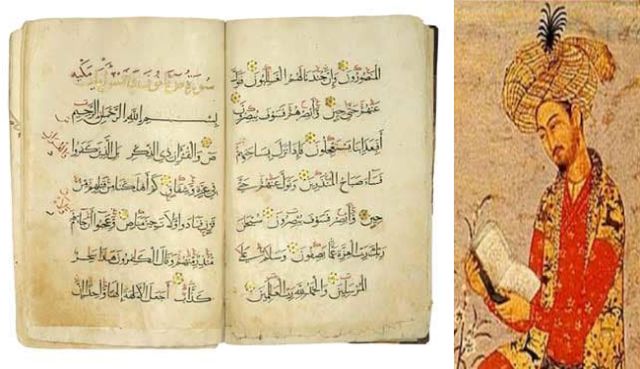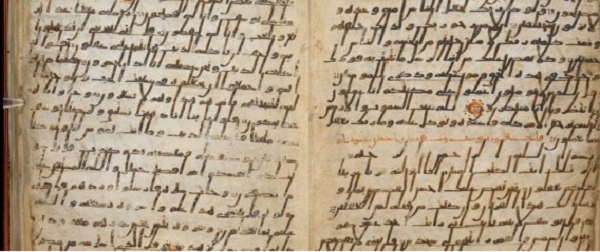
by admin | May 25, 2021 | News
 London : Collectors and connoisseurs of Islamic and Indian art are in for a treat as medieval historical artefacts dating between the 9th and the 19th centuries will be on auction at Christie’s London on Thursday.
London : Collectors and connoisseurs of Islamic and Indian art are in for a treat as medieval historical artefacts dating between the 9th and the 19th centuries will be on auction at Christie’s London on Thursday.
Illustrations from an early “Baburnama”, gilded manuscripts of the Quran, a 17th century painting of Hindu goddess Bagalamukhi, and a pigment-on-paper work showing Mughal emp`eror Jahangir on a lion-hunt, will be some of the works that will go under the hammer at the day-long auction titled “Art of the Islamic and Indian Worlds”.
Many cover a geographical area stretching from India in the east to Al-Andalus in modern Spain in the west, Christie’s said in a statement.
On offer will be an illustration by artist Haydar Kashmiri from an early “Baburnama” — an autobiographical account of Babur (1483-1530), who founded the Mughal empire in the Indian subcontinent in 1526.
The illustration shows a battlefield, but interpreters are divided about which war it depicts, with many pointing to the Battle of Kandahar, Christie’s said.
Another striking work on sale would be a painting of the Hindu goddess Bagalamukhi, dating back to 1630s, attributed to Mughal court artist Payag.
This painting of the deity, believed to be among the 10 avatars of Devi that runs parallel to those of Hindu god Vishnu, holds importance as its provenance relates to Mughal patronage.
The auction focussing on Islamic art also showcases gold illuminated manuscripts of the Quran, with carefully preserved parchments also holding some of the earliest forms of calligraphy.
Also on offer are many iconographical paintings relating to Islamic and Indian mythology and court life, including one where the fourth Mughal emperor Jahangir is seen brandishing his sword in front of a lion in a jungle hunt.
The auction, housing many more artefacts, is preceded by an exhibition at Christie’s London, that started on Saturday.
—IANS

by admin | May 25, 2021 | Muslim World
 Jakarta, (IINA) – Indonesian state-owned fuel Pertamina Company is offering two liters of free petrol to people who read a chapter of the Holy Qur’an during the month of Ramadan.
Jakarta, (IINA) – Indonesian state-owned fuel Pertamina Company is offering two liters of free petrol to people who read a chapter of the Holy Qur’an during the month of Ramadan.
Prayer rooms were set up in five gas stations to accommodate this endeavor. The program organizers say the goal is to promote Islam in the society.
Participants are required to fill up a registration form before they proceed to the prayer room where they can pick up a copy of the Qur’an and read any chapter they like.
It is noteworthy that the mechanism uses an ‘honor system’, as the organizers do not monitor a person while he’s reading.
Two liters of petrol is enough to fill half-a-tank of a motorcycle, which is the most common mean of transport in the country.

by admin | May 25, 2021 | Muslim World

British Library’s oldest Qur’an manuscript (Pic from British Library’s website)
London (IINA) – The British Library’s oldest Qur’an manuscript, dating from the eighth century, has now been fully digitized and is available on the British Library’s Digitized Manuscripts site, British Library’s website reported.
Among the most ancient copies of the Qurʼan, it comprises 121 folios containing over two-thirds of the complete text and is one of the largest of known fragments of an early Qurʼan written in the maʼil – the sloping style of script.
This manuscript was purchased by the British Museum in 1879 from Greville John Chester, a clergyman interested in archaeology, Egyptology and natural history and made numerous trips to Egypt and the Near East, where he acquired objects and manuscripts. These objects and manuscripts are now in the collections of major British cultural and library institutions. It is very likely Chester acquired this Qur’an when he was in Egypt.
The earliest Qur’an manuscripts were produced in the mid-to-late seventh century, and ancient copies from this period have not survived intact and exist only in fragments.
This manuscript contains three series of consecutive leaves, which is about two-thirds of the Qur’an text and is one of the oldest Qur’anic manuscripts in the world.
The importance of this manuscript and all the other known early Qur’an fragments is that they provide the only available evidence for the early development of the written recording of the Qur’an text and help towards understanding of how early Qur’an codices were produced.

 London : Collectors and connoisseurs of Islamic and Indian art are in for a treat as medieval historical artefacts dating between the 9th and the 19th centuries will be on auction at Christie’s London on Thursday.
London : Collectors and connoisseurs of Islamic and Indian art are in for a treat as medieval historical artefacts dating between the 9th and the 19th centuries will be on auction at Christie’s London on Thursday.

